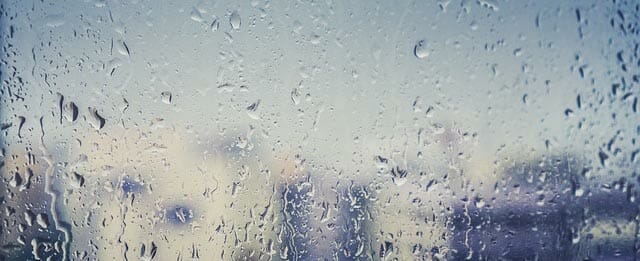
Being from the UK, we were never without a rainy day. In fact, the majority of days were rainy, with the odd day of sunshine in between. There are several things I miss about the UK, but the weather isn’t one of them. Here in Queensland, Australia, we’ve seen the first of the wet season’s rain falling and it’s been quite a shock. In fact, in the last two days we’ve had around 200mm of rain fall, with an estimated 500mm of rain due tomorrow. That’s a lot of water. It’s forecast to keep going for another week at least!
I just can’t sit by and let all the action outside happen without at least attempting to record it. It’s currently lashing it down outside, hitting the windows and the wind is picking up and blowing it hard against the roof. It’s such a great sound. For this reason, I’ve been experimenting with several microphone placements. When your house has a metal roof, the sound is amplified and is very distinct. Having already recorded the rain hitting the roof several times before, I didn’t really need to record more of these, but it’s almost impossible to not pick it up in the recording around the house. So I hope the following may give any aspiring field recordists some inspiration as to how an event as simple as rain can bring about many recording possibilities.
First up, if it’s raining, the sound you hear isn’t produced by the rain falling, it’s produced by what it lands on. So depending upon where you are, you’ll hear rain differently. I personally find that rain sounds that are most generic is rain on vegetation. I have found that such sounds are very popular here at zapsplat. Rain on concrete is harsh, rain on metal is even harsher. Rain on water is a unique sound that only works for that purpose in the sfx world (unless manipulated and used for something else). So here are a few simple ideas for getting some different rain variations.
Think about it… millions of people everyday walk the streets with an umbrella. If you’ve every used one, you’ll know that the sound of rain on it is unique. So it makes sense that every sound effects library should have this available. Recording under an umbrella is easy too. Just make sure you’re ready for any gusts of wind that might come along.
It might not be needed often, but if you’re recording rain, consider recording the sound of the rain hitting a jacket and record inside the jacket too. Recording the sound of rain hitting a hood (just place the microphone up inside the hood and leave it to record, making sure you protect your equipment) is quick and easy and it may just be needed by someone someday.
If you’ve ever been camping in the rain, you’ll know just how cosy you feel when the rain is hitting the canvas hard and you’re dry and warm inside. If you’ve got a tent, then put it up and wait for the rain. Or if no rain is forecast, you can always use a garden hose to spray up in the air to land on the tent. If you don’t have a tent, the above idea of rain on a raincoat or jacket work pretty well. You may have to layer it up in the edit to get a fuller sound.
Rain hitting water makes a great and unique sound as stated earlier. You don’t need to have a swimming pool or live by a lake to get these sounds. A child’s paddling pool works well and just as above, if there is no rain forecast, a hose will work just as well. But consider laying towels around the rubber to stop the sound of water hitting it ruining the recording.
Recording rainfall on a car is fun and can be performed easily. You can get variations from driving or stationary, engine on or off, rain hitting the roof, windows or sides etc. You can also get different sounds if you park under large drips or broken guttering. Also consider recording with windows open and closed.
I love the sound of water hitting things including plastic, metal and glass (weird I know) so I often can be found with a hose spraying it against buckets, sheeting and anything else I can find. So grab a hose or wait for a storm and have lots of materials to hand.
Just make sure you keep your equipment safe and dry. Clean and dry your microphones, leads and recorder etc after the session to avoid damage. If you don’t want the hassle of recording yourself, we have lots of free rain sound effects here.
Download SFX
Checking your download limits
Add to list
Please select the list to add to.
List Details